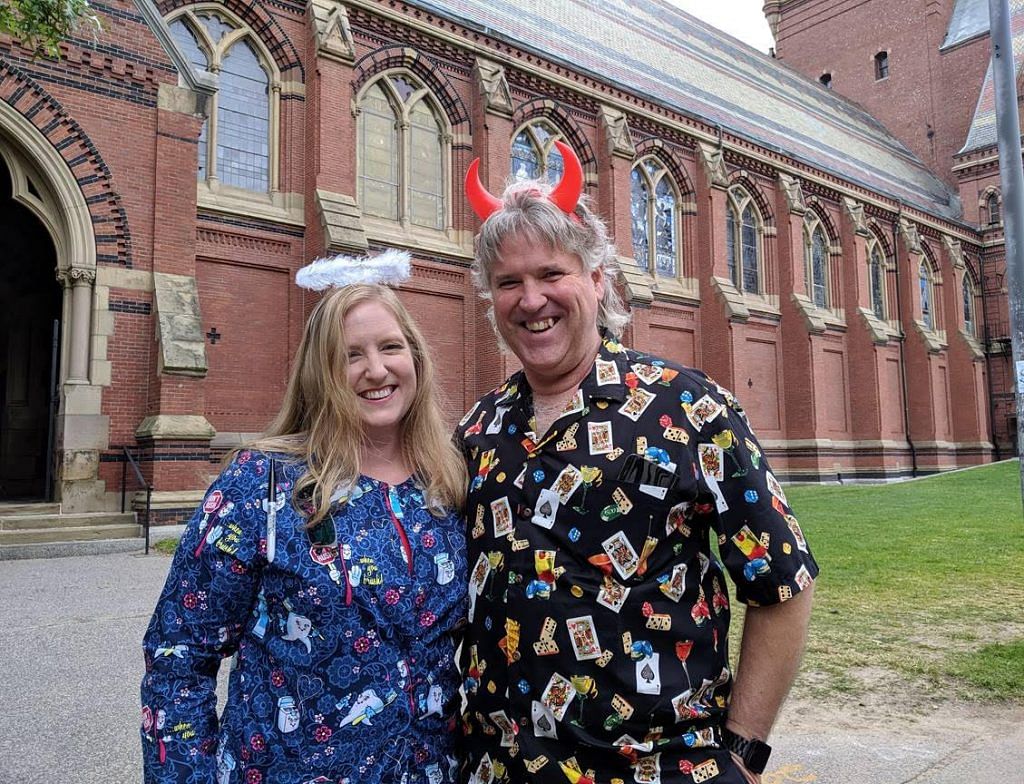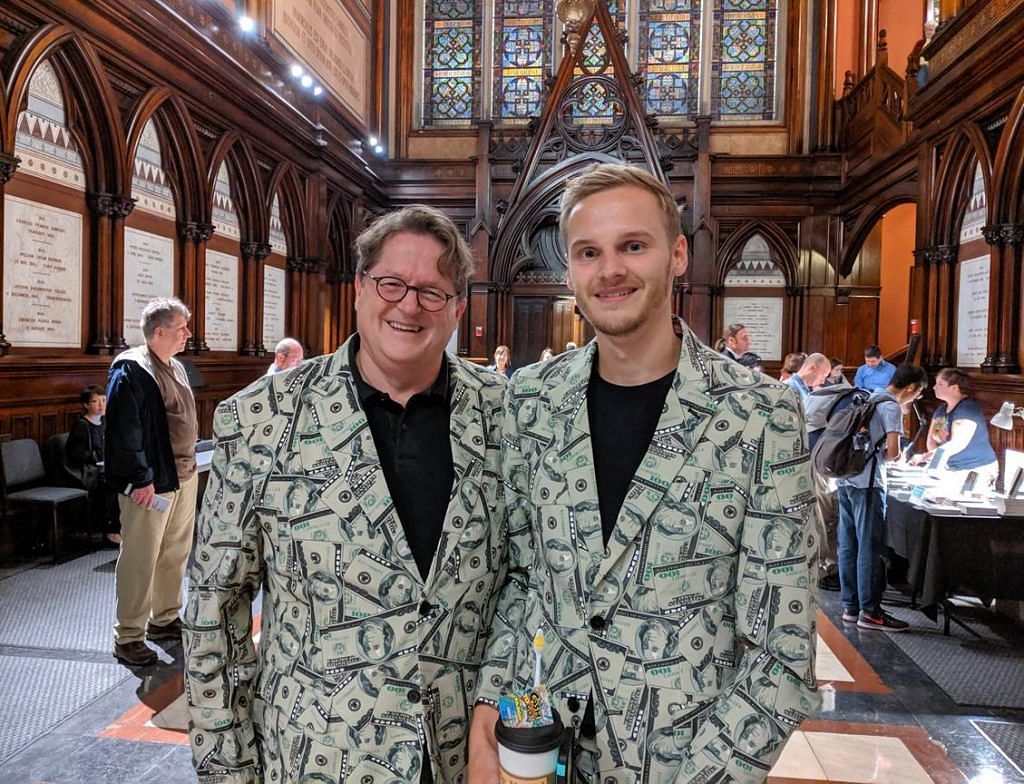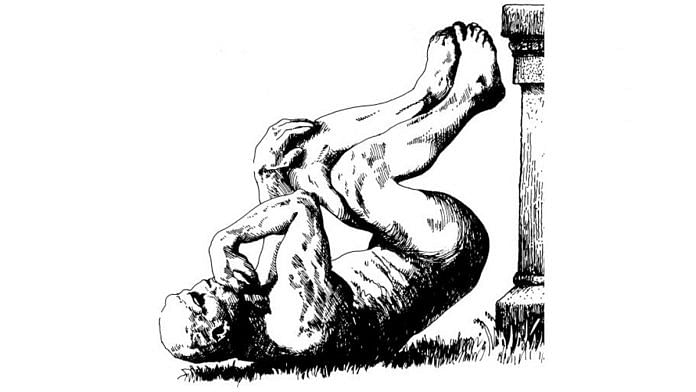Cambridge: Studies measuring scrotal temperature asymmetry in naked and clothed men, the pleasurability of scratching an itch and the possible life-saving potential of pizza were among the top winners of this year’s Ig Nobel Prize — a set of satirical awards honouring research that “first make people laugh then make them think”.
The (Ig)Nobel Prizes
The Ig Nobel Prizes were founded by Marc Abrahams, editor of the Annals of Improbable Research, in 1991. He has also been the emcee of every award ceremony ever since.
The ceremony is a celebration that aims to spur people’s curiosity, making them reflect on what’s important and what’s not.
The name Ig Nobel itself is a play on the word “ignoble” and the Nobel prizes — the pomp and pageantry of which are lampooned mercilessly by this prize.
Every year, ten Ig Nobel Prizes are awarded in a variety of categories, and the winners receive their prize from actual Nobel laureates. Eric Maskin (who won the Nobel prize for Economics in 2007), Rich Roberts (Medicine, 1993), and Jerry Friedman (Physics, 1990) presented the awards this year.
Also read: Indians mansplain ‘planets’ to an engineer who helped land Curiosity rover on Mars
The cross-over between the Nobel and the Ig Nobel doesn’t just end there. In 2000, Sir Andre Geim won the Ig Nobel Prize in Physics for levitating a frog using magnetism. In 2010, he went on to win the Nobel Prize in Physics for his work on graphene.
The ceremony
This year, Abrahams dressed up like a circus magician for the ceremony and extracted every ounce of comedy from the night’s proceedings.
The ceremony was a quirky offering — wrapped in hilarity and garnished with the ribbon of absurdity. To prevent winners’ acceptance speeches from exceeding their allotted time, an 8-year-old girl walks on stage and continuously yells, “Please stop! I’m bored!”
Twice during the night, there was a deluge of paper airplanes — a long-standing Ig Nobel tradition.
Also read: Lunar night is near, ISRO running out of time to contact Vikram lander

The winners
This year’s winners received a “cup full of habits,” a piece of paper signed by the presenting Nobel Laureates and $10 trillion in cash.
The prize money, however, was in Zimbabwean Dollars and is essentially worthless due to hyperinflation.

Complete list of Ig Nobel Prizes 2019 winners:
Medicine: Silvano Gallus for “collecting evidence that pizza might protect against illness and death, if the pizza is made and eaten in Italy”.
Medical Education: Karen Pryor and Theresa McKeon, “for using a simple animal training technique – called ‘clicker training’ — to train surgeons to perform orthopedic surgery”.
Biology: Ling-Jun Kong, Herbert Crepaz, Agnieszka Górecka, Aleksandra Urbanek, Rainer Dumke, and Tomasz Paterek, “for discovering that dead magnetized cockroaches behave differently than living magnetized cockroaches”.
Anatomy: Roger Mieusset and Bourras Bengoudifa, “for measuring scrotal temperature asymmetry in naked and clothed men”.
Chemistry: Shigeru Watanabe, Mineko Ohnishi, Kaori Imai, Eiji Kawano, and Seiji Igarashi, “for estimating the total saliva volume produced per day by a typical five-year-old child”.
Engineering: Iman Farahbakhsh, “for inventing a diaper-changing machine for use on human infants”.
Economics: Habip Gedik, Timothy A. Voss, and Andreas Voss, “for testing which country’s paper money is best at transmitting dangerous bacteria”.
Peace: Ghada A. bin Saif, Alexandru Papoiu, Liliana Banari, Francis McGlone, Shawn G. Kwatra, Yiong-Huak Chan, and Gil Yosipovitch, “for trying to measure the pleasurability of scratching an itch”.
Psychology: Fritz Strack, “for discovering that holding a pen in one’s mouth makes one smile, which makes one happier—and for then discovering that it does not”.
Physics: Patricia Yang, Alexander Lee, Miles Chan, Alynn Martin, Ashley Edwards, Scott Carver, and David Hu, “for studying how, and why, wombats make cube-shaped poo”.

India at the Ig Nobel
Over the years, a few Indians have also been awarded the Ig Nobel Prize.
In 2001, Dr. Chittaranjan Andrade and his student B.S. Srihari of the National Institute of Mental Health and Neurosciences in Bangalore were awarded the Ig Nobel Prize for Public Health for their “probing medical discovery that nose picking is a common activity among adolescents”.
“Some people poke their nose into other people’s business,” said Dr. Andrade in his acceptance speech, “I […] poke my business into other people’s noses.”
The following year, K.P. Sreekumar and his late professor G. Nirmalan of Kerala Agricultural University were awarded the Mathematics prize for their report on the “Estimation of the Total Surface Area in Indian Elephants”. This mammoth math may seem pointless, but K.P. Sreekumar explains that knowing the surface area of an elephant can help veterinarians in estimating its metabolic rate, and in calculating accurate dosage for medication.
Also read: Top science & medical research bodies put guidelines in place to fix dubious studies
The awards are not just limited to the scientific realm, the lens of satire is frequently focused on political dispensations and society at large.
In 1998, Indian Prime Minister Atal Bihari Vajpayee and his Pakistani counterpart Nawaz Sharif were jointly awarded the Ig Nobel Peace Prize for their “aggressively peaceful explosions of atomic bombs”.
In 2003, the Peace Prize was awarded to Lal Bihari of Uttar Pradesh — who battled a Kafkaesque government bureaucracy to prove that he was alive after being declared legally dead.
Dr. Andrade, the psychiatrist who studied nose-picking in adolescents, is an advocate for the use of humour in psychiatry and in scientific literature.
“Humor is indeed an important and much neglected tool,” he wrote. “Journals would […] become more interesting, and more likely to be read.”
The Ig Nobel pulls off this balancing act with flair because for improbable research, science and humour are just two sides of a Möbius strip.
Watch the entire 2019 Ig Nobel Prize ceremony below:
Also read: It’s time to bring in regulation for outer space






